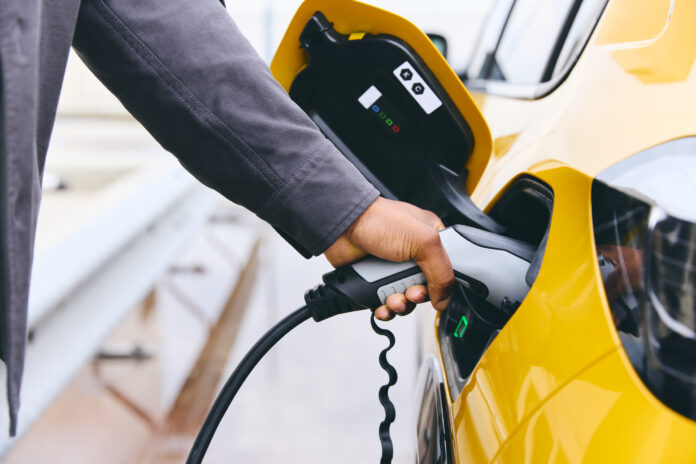
In the dynamic world of electric mobility and sustainable energy solutions, Vehicle-to-Grid (V2G) technology has emerged as a game-changer. V2G technology allows electric vehicles (EVs) not only to draw energy from the grid but also to send surplus energy back to it. This bi-directional flow of electricity offers substantial benefits to both auto manufacturers and energy companies. In this article, we explore the intricate web of V2G Business-to-Business (B2B) partnerships between auto manufacturers and energy companies, and how these collaborations are shaping the future of sustainable transportation and energy management.
The V2G Revolution
V2G technology leverages the vast energy storage capacity of EV batteries. When an EV is plugged into the grid, it can act as a mobile battery, storing excess energy when supply exceeds demand and releasing it when demand surges. This not only helps stabilize the grid but also presents an opportunity for EV owners to earn money by selling surplus energy back to the grid.

Auto Manufacturers Leading the Charge
Auto manufacturers are not merely building electric vehicles (EVs); they are spearheading the V2G revolution by seamlessly integrating V2G capabilities into their EV models. This integration goes beyond merely producing cars; it transforms EVs into mobile energy assets, capable of contributing to a more sustainable and efficient energy ecosystem.
The significance of this integration cannot be overstated. As the demand for sustainable energy solutions rises, auto manufacturers recognize that their EVs can serve as more than just a mode of transportation. They are evolving into crucial pieces of a broader energy puzzle, providing owners with the ability to engage actively in the energy market while supporting the greater good.
Nissan: A Pioneer in V2G
Nissan, with its pioneering Leaf EV, stands out as a trailblazer in V2G technology. This Japanese automaker has been at the forefront of integrating V2G capabilities into its vehicles, demonstrating a commitment to both EV innovation and sustainable energy solutions.
Through strategic partnerships with energy companies, Nissan has enabled Leaf owners to seamlessly connect their vehicles to the grid. This groundbreaking collaboration allows EV owners to tap into grid services, optimizing their energy use and, in some cases, even earning revenue by selling excess energy back to the grid.
Nissan’s dedication to V2G technology has not only benefited its customers but has also played a pivotal role in enhancing the stability and resilience of energy networks. By offering their EVs as grid resources, auto manufacturers like Nissan are driving positive change on multiple fronts, from the individual consumer level to the broader energy ecosystem.
Energy Companies Embracing V2G
Energy companies, too, are recognizing the immense potential of V2G technology for grid optimization. Collaborating with auto manufacturers, they gain access to a distributed network of energy storage devices. This network proves invaluable in balancing supply and demand, particularly during peak times when the grid faces its greatest challenges.
Through V2G partnerships, energy companies can harness the power of EV batteries, using them strategically to stabilize the grid. By drawing surplus energy from connected EVs during low-demand periods and redistributing it when demand surges, energy companies can ensure a more reliable and resilient energy supply for all consumers.
E.ON and V2G
Companies like E.ON exemplify the commitment of energy providers to embrace V2G opportunities. In partnership with Nissan, E.ON has actively explored and developed innovative V2G solutions. These initiatives enable EVs to serve as mobile energy hubs, seamlessly integrating with the grid to support grid stability and optimization.
The collaboration between E.ON and Nissan represents a significant leap forward in building a more sustainable and efficient energy ecosystem. By leveraging V2G technology, they are not only transforming the way energy is managed but also contributing to the reduction of carbon emissions and the promotion of clean energy solutions.
In essence, V2G partnerships between auto manufacturers and energy companies signify a fusion of expertise, resources, and vision. Together, they are reshaping the future of energy management, transportation, and sustainability, driving us closer to a world where our vehicles not only transport us but also power a greener and more resilient energy landscape.
6 Key Benefits of V2G/B2B Partnerships
1. Grid Stability and Resilience
V2G technology enhances grid stability by supplying energy during peak demand and absorbing excess energy during off-peak hours. This results in a more reliable energy supply for all consumers. V2G technology also enhances the resilience of energy grids by providing backup power during grid failures or emergencies. In cases of blackouts or natural disasters, EVs equipped with V2G capabilities can serve as mobile power sources for critical infrastructure and communities, ensuring essential services remain operational.
2. Revenue Generation
For auto manufacturers, V2G partnerships open new revenue streams. They can earn revenue from energy sales back to the grid and offer V2G services as a value-added feature for their EV customers.
3. Carbon Reduction
V2G B2B collaborations contribute to reducing carbon emissions by encouraging the use of clean energy sources and optimizing energy use. The increased adoption of EVs and V2G technology leads to reduced tailpipe emissions, improving air quality in urban areas. This benefit has a direct positive impact on public health by reducing respiratory illnesses and related healthcare costs. By optimizing energy use and relying on clean energy sources, V2G B2B collaborations contribute to reduced fossil fuel consumption. This not only lowers greenhouse gas emissions but also mitigates the environmental impact of traditional energy generation.
4. Technology Advancements
V2G partnerships drive innovation in battery and energy management technologies. As these technologies advance, EVs become more efficient, and their batteries last longer, ultimately benefiting consumers and the environment.
5. Enhanced Energy Market Participation
V2G partnerships create opportunities for EV owners to participate actively in energy markets. They can sell surplus energy to the grid during peak pricing periods, potentially lowering their energy costs and providing a financial incentive for EV adoption.
6. Peak Load Management
These partnerships allow energy companies to manage peak energy demand more efficiently. By drawing electricity from V2G-enabled EVs during peak hours, the strain on the grid is reduced, minimizing the need for additional infrastructure investments and lowering the risk of blackouts.
Future Prospects: Expanding Partnerships
The promising horizon of V2G B2B partnerships holds the potential to revolutionize both the auto industry and energy grids. As the world continues its inexorable shift towards sustainable energy solutions, the synergy between auto manufacturers and energy companies will become an increasingly defining feature of the energy landscape.
Impact on the Auto Industry
The role of auto manufacturers is undergoing a profound transformation. No longer confined to producing vehicles as standalone entities, they are fast becoming integral players in the energy sector. The integration of V2G capabilities into their EV models transcends the traditional automotive business model, where a car’s value was primarily tied to its physical utility.
In this new paradigm, auto manufacturers are creating EVs that double as energy assets, capable of actively participating in the management of energy resources. This evolution redefines their responsibilities and opportunities, positioning them as key contributors to grid stability and sustainability.
Through V2G partnerships, auto manufacturers unlock new revenue streams, benefitting not only from vehicle sales but also from the sale of grid services. These partnerships empower manufacturers to transform their EVs into income-generating assets for both consumers and themselves. Such financial incentives will likely drive increased production of EVs with V2G capabilities, accelerating the transition towards sustainable transportation.
Impact on Energy Grids
The expansion of V2G partnerships will have a profound and positive impact on energy grids. Electric vehicles, with their sizable batteries, offer a distributed network of energy storage resources. This network can be harnessed to optimize grid operations and enhance its overall reliability.
During times of high energy demand, V2G-enabled EVs can release stored electricity into the grid, helping meet peak energy needs efficiently. Conversely, during periods of excess energy production, these EVs can absorb surplus electricity, preventing wastage and enhancing grid stability. The result is a more balanced and resilient energy grid that can better accommodate the fluctuations inherent in renewable energy sources.
By actively engaging in V2G partnerships, energy companies gain access to a network of distributed energy assets. These assets can be aggregated and intelligently managed to respond dynamically to grid needs, thus avoiding grid overload and blackouts. This dynamic management is particularly vital as societies transition towards greater reliance on intermittent renewable energy sources.
Policy and Regulation
The growth and success of V2G technology will depend significantly on supportive policies and regulations that incentivize both auto manufacturers and energy companies to actively engage in these partnerships. Government bodies and regulatory authorities hold a key role in shaping the landscape for V2G adoption.
Policies that encourage the integration of V2G capabilities into EVs, provide financial incentives for grid support services, and streamline the regulatory framework for V2G interactions are essential. Such policies can stimulate innovation, investment, and collaboration in the V2G space, creating a conducive environment for stakeholders to fully embrace and utilize this transformative technology.
Furthermore, regulations that define the rights and responsibilities of EV owners, energy companies, and grid operators in the V2G ecosystem will provide clarity and confidence to all parties involved. By establishing a robust legal framework, governments can foster trust and ensure the smooth functioning of V2G operations, ultimately accelerating its adoption.
Collaboration is Driving Progress
V2G B2B partnerships between auto manufacturers and energy companies represent a win-win scenario. These collaborations drive innovation, contribute to a more stable and sustainable energy grid, and open up new revenue streams for the automotive industry. As we move towards an increasingly electrified and interconnected world, V2G technology is poised to play a pivotal role in shaping the future of transportation and energy management. It’s a bright future where electric vehicles not only drive us but also power the world around us.




